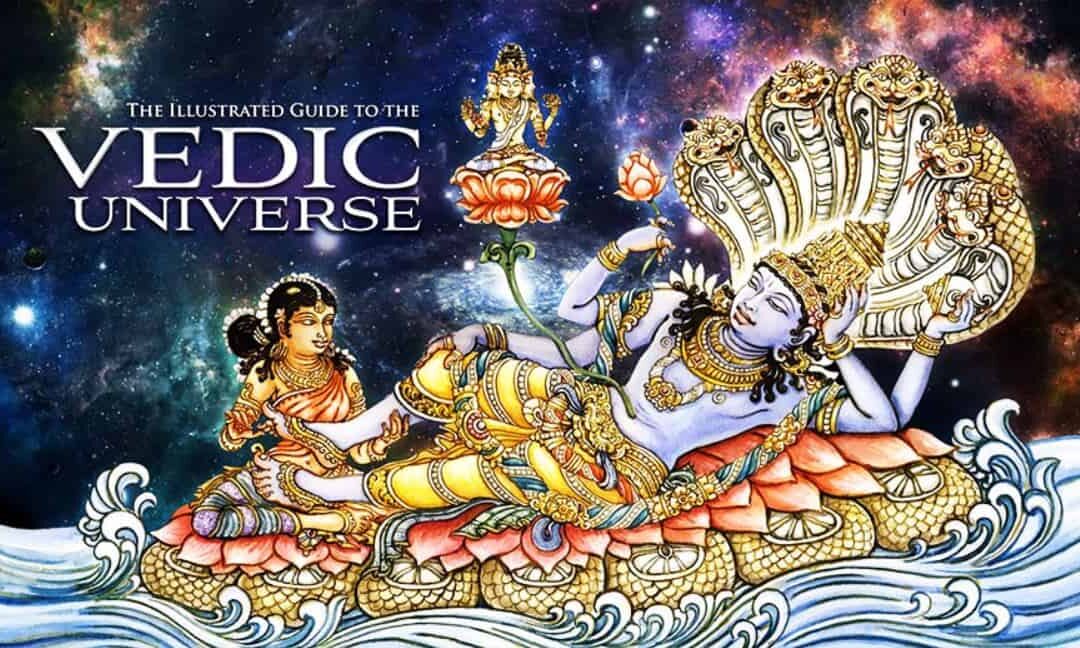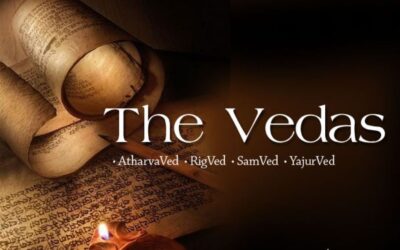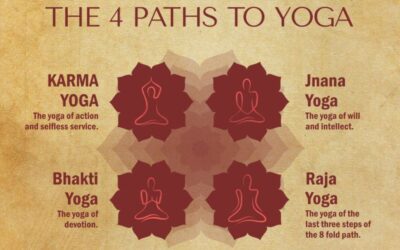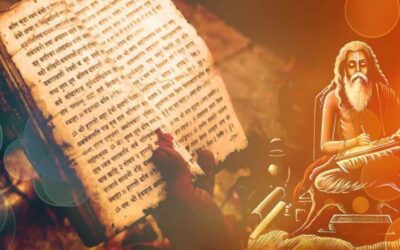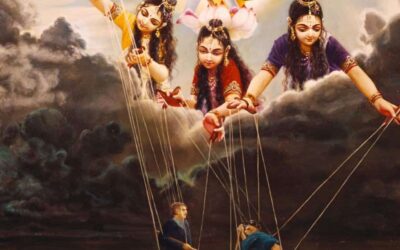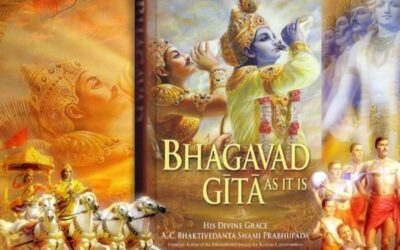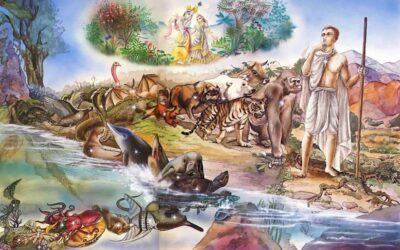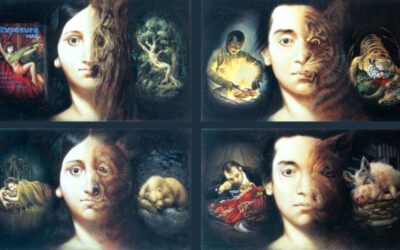Vedic Cosmology and Creation Sānkhya Philosophy – Vedic Universe
- Vedic Philosophy describes two types of existence in the entire cosmos – material & spiritual existence.
- Each material creation is preceded by dissolution and again creation. Whereas, the spiritual creation remains as it is.
- The material creation constitutes only 25% of the entire creation and the rest 75% is spiritual existence.
- Vedic Cosmology upholds the idea that creation is eternal, having no beginning or end.
- The whole material cosmos exists in two states – the unmanifested and the manifested state.
- The material existence is made up of 24 elements and the soul is beyond the material existence as the 25th element and God being the 26th Spiritual Element.
24 Elements of Material Creation:
- Five Gross Elements – Pancha Tattva: Earth – Water – Fire – Air – Ether
- Five Sense Objects – Pancha Tanmatra: Smell – Taste – Form – Touch – Sound
- Knowledge Working Senses – Pancha Karmendriyan: Hands – Legs – Mouth – Genitals – Rectum
- Knowledge Acquiring Senses – Pancha Gyanendriyan: Nose – Tongue – eyes – Skin – Ear
- Four Subtle Elements – Sookshma Tattva: Mann (Mind) – Buddhi (Intelligence) – Ahankara (Ego) – Chitta (Consciousness)
The sum total of the twenty-four elements in an unmanifested and undifferentiated state is called Pradhāna and in the manifested stage of existence, this Pradhāna is known as Prakriti or Durga. Without the intervention of the Purusha or Maha Vishnu (God) Pradhāna could never have developed into Prakriti. To further create from Prakriti, Purusha glances at Prakriti and that glance is called Kaal or Shiva (Time) in which all the Jiva (soul) move into Prakriti. When Prakriti and Kaal unite together, the Mahad tattva is formed, which is the initial ingredient of further creation, and this Mahad tattva consists of three modes Sattva, Rajas, and Tamas.

Vedic Time System (Age of the Universe)
- Vedic scriptures describe Time as Kaal varying from microseconds to trillions of years.
- According to Vedic texts, time is cyclic, which repeats itself forever.
- Each time-cycle has three components, Srishti (creation), Sthithi (Maintenance), and Laya (Dissolution).
- Brahma is responsible for Creation, Vishnu for Maintenance, and Shiva for Dissolution.
- The time cycle is lunisolar, where time is calculated on the solar and as well as on the lunar system.
- Time goes as – Day (Tithi) – Lunar fortnight (Paksha) – Lunar month (Maas) – Season (Ritu) – Solstice (Ayana) – Year (Sanvatsar) – Age (Yuga) – Great Yuga (Mahayuga) – Age of Manu (Manvantara) – Cosmic day (Kalpa) – Age of Universe (Maha Kalpa)
15 Days = 1 Paksha = A month has two Paksha
2 Paksha = 1 Maas (30 Days) = Krishna Paksha & Shukla Paksha
2 Maas = 1 Ritu (2 Months) = 6 Ritu in a Year
3 Ritu = 1 Ayana (6 months) = Uttar Ayana & Dakshin Ayana
2 Ayana = 1 Sanvatsar (1 year) = 1 Day of demi-gods
Yuga Cycle:
4,32,000 Human year = Kali Yuga (Dark Age) = 1200 years of demi-gods
8,64,000 Human year = Dvapara Yuga (Bronze Age) = 2400 years of demi-gods
12,96,000 Human year = Treta Yuga (Silver Age) = 3600 years of demi-gods
17,28,000 Human year = Satya Yuga (Golden Age) = 4800 years of demi-gods
43,20,000 Human year = One Mahayuga = 12000 years of demi-gods
71 Mahayuga = One Manvantara = Life span of one Manu
14 Manvantara = One Kalpa = 12 hours of Brahma
72000 Kalpa = One Maha Kalpa = Life span of Brahma
1 Maha Kalpa = Age of the Universe = One breath of Maha Vishnu
Brahma’s life span is equal to 311,040,000,000,000 human years. This period is named Maha Kalpa. A universe lasts only for one Maha Kalpa period. At the end of it, the universe is completely destroyed together with the creator Brahma and a new universe would be created with a new Brahma. This cycle goes on endlessly.

